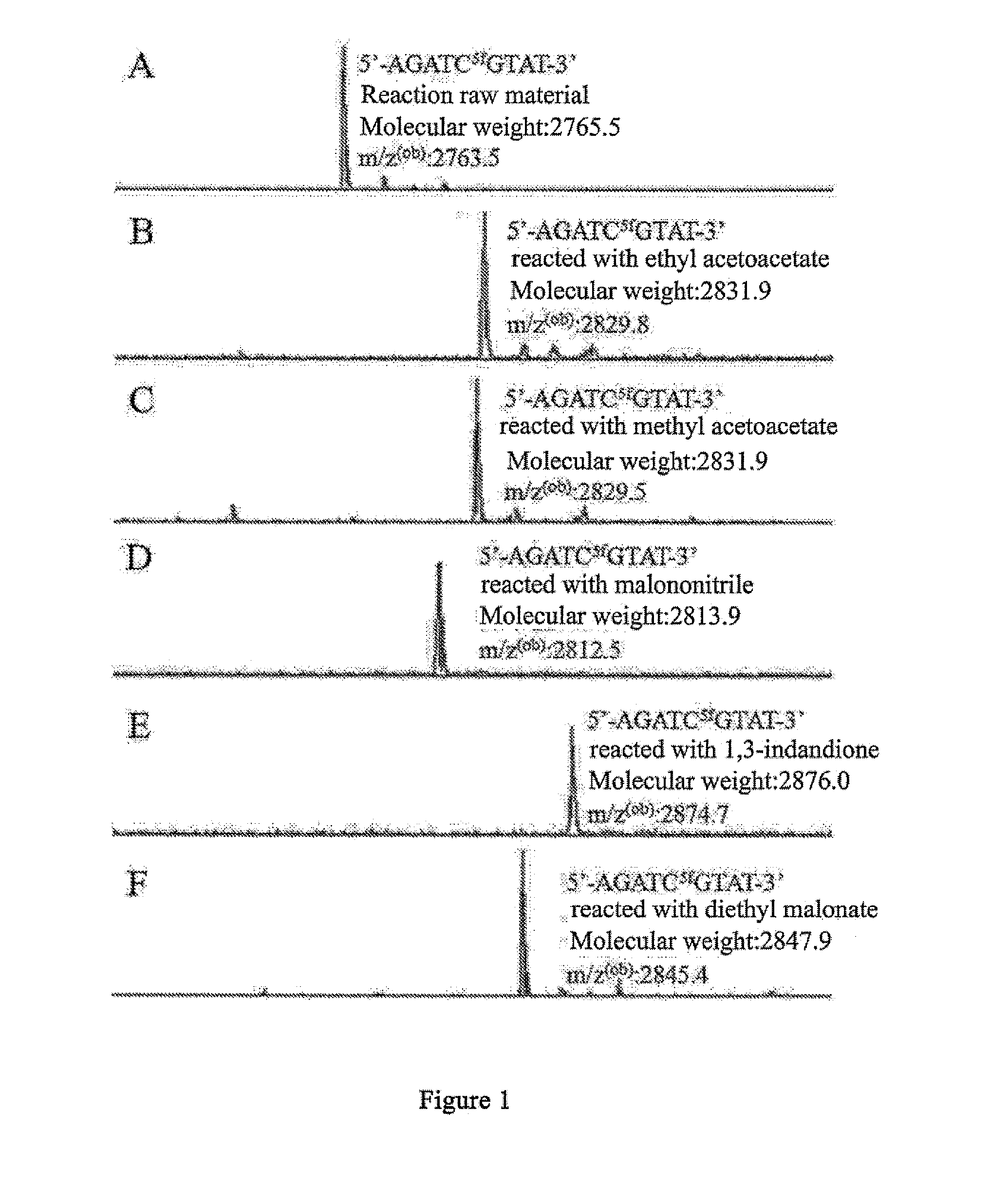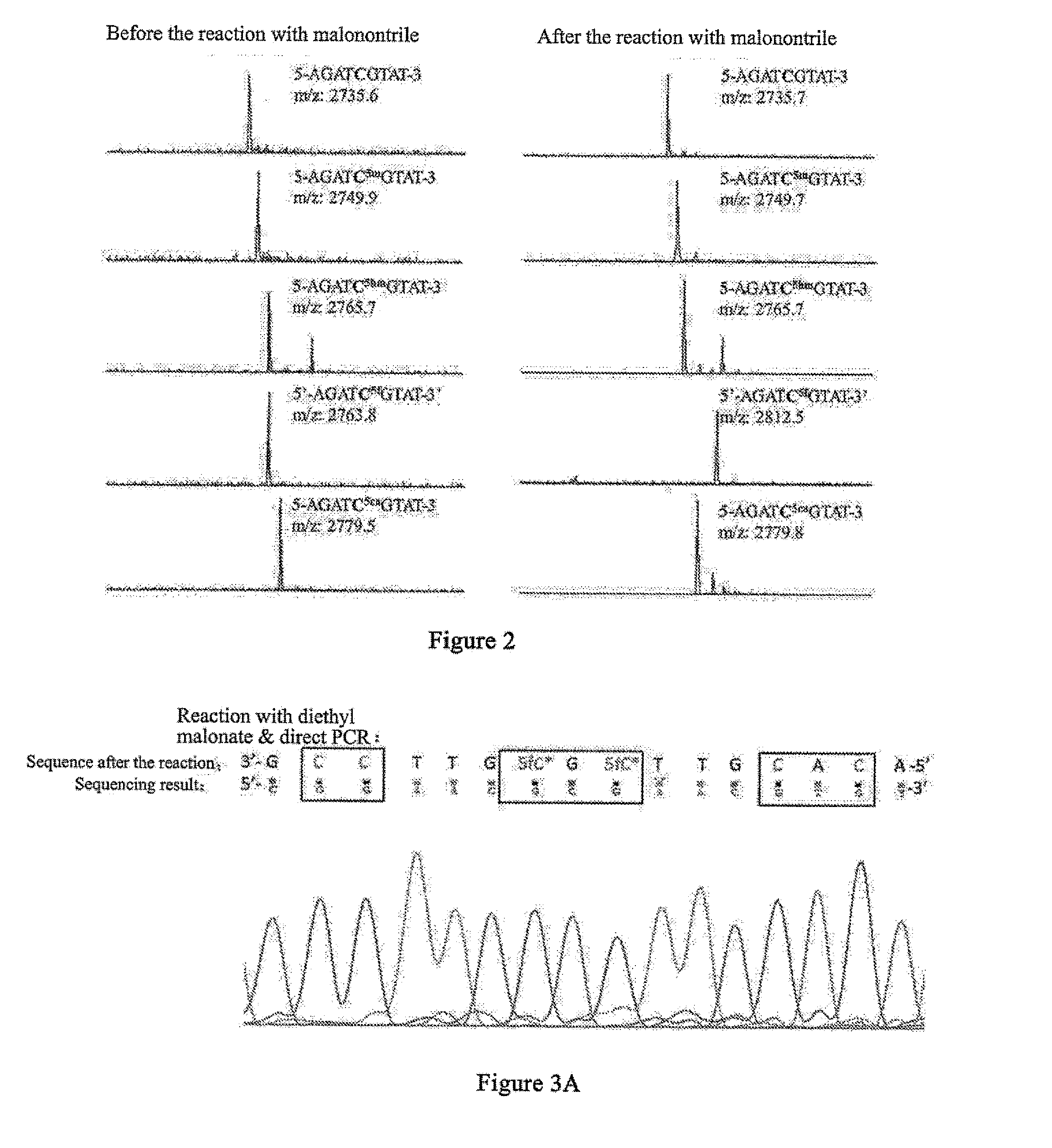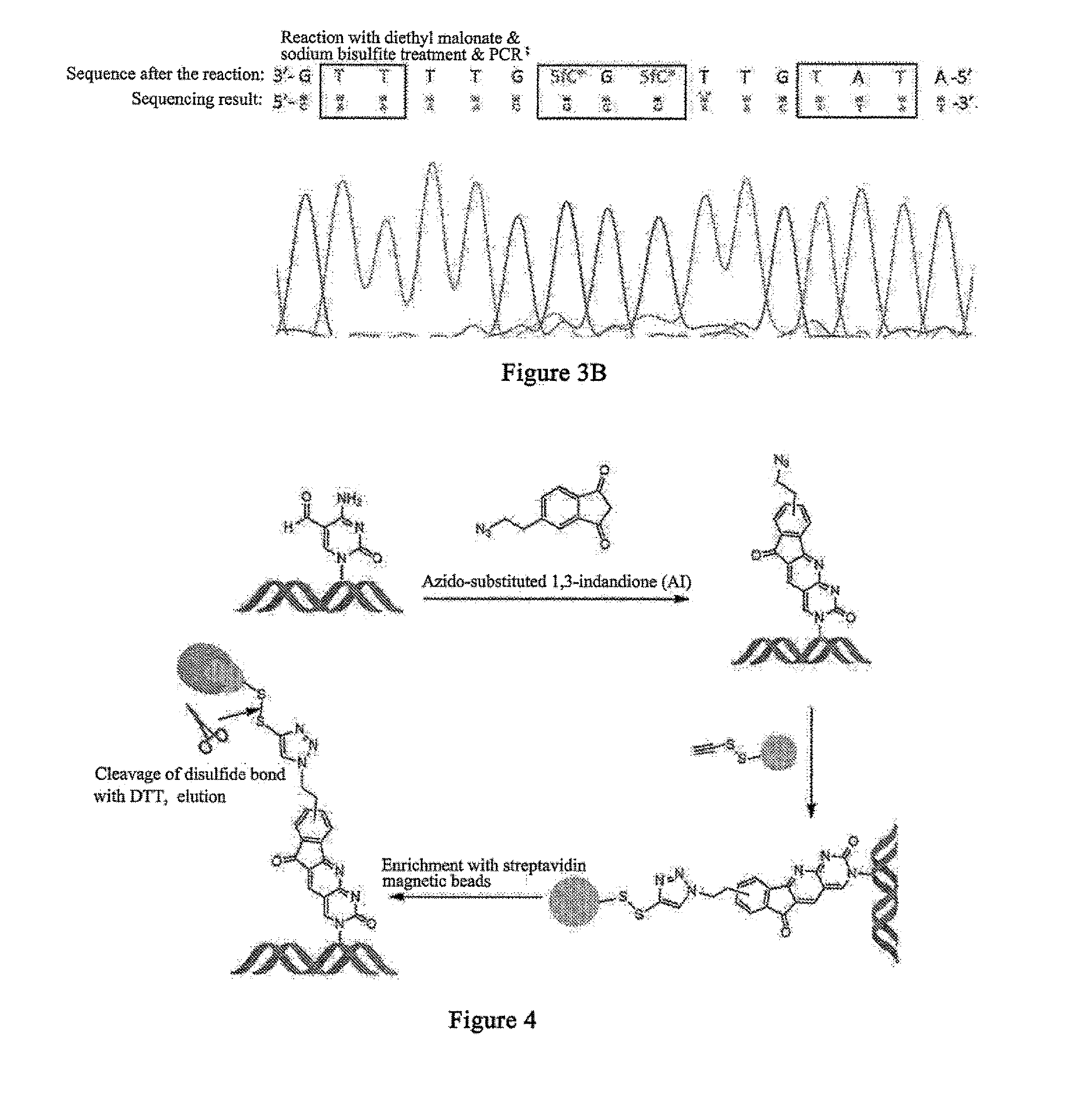5-formylcytosine specific chemical labeling method and related applications
a chemical labeling and 5-formylcytosine technology, applied in the field of chemical labeling and detection methods, can solve the problems of complex bisulfite sequencing, high background noise, and difficult process of sodium bisulfite treatment, and achieve the effect of high background noise, high cost, and difficulty in realizing single-base resolution sequencing
- Summary
- Abstract
- Description
- Claims
- Application Information
AI Technical Summary
Benefits of technology
Problems solved by technology
Method used
Image
Examples
example 1
Synthesis of the Representative Compounds of Compounds I, II, and III
[0183]The artificially synthesized 9-base oligomeric nucleotide chain containing 5fC base Oligo NO.1 was reacted with the representative compounds i-1, ii-1, and iii-1 of 3 kinds of compounds i, ii, and iii, resulting in 3 representative product compound I-1, II-1, and 111-3 of 3 structures I, II, and III. In the reaction, the representative compound of compound i is either ethyl acetoacetate or methyl acetoacetate; the representative compound of compound ii is malononitrile; and the representative compound of compound iii is 1,3-indandione.
[0184]The particular reaction route was as below.
[0185]Compound i-1 was the representative compound, ethyl acetoacetate or methyl acetoacetate. An appropriate amount of Oligo NO.1, i.e. 5fC-9mer DNA oligomeric nucleotide chain, was dissolved in an alkaline methanol solution, then much excessive moles of ethyl acetoacetate or methyl acetoacetate was directly added, and the reacti...
example 2
Implementing “5fC Ring-Protecting Sodium Bisulfite Sequencing Technique” with Diethyl Malonate
[0190]Diethyl malonate belongs to the active methylene of compound i. The target compound 1-2 can be obtained through a two-step condensation reaction of diethyl malonate with 5fC base in an alkaline methanol solution (as shown in the schematic diagram below). The process of the reaction of Oligo NO.1, i.e. 5fC-9mer DNA oligomeric nucleotide chain with diethyl malonate is as follows: an appropriate amount of DNA oligomeric nucleotide chains was dissolved in an alkaline methanol solution, then much excessive moles of diethyl malonate was directly added, and the reaction was performed under agitation at 37° C. for 24 h after mixing homogeneously, obtaining compound I-2. In the reaction, the active methylene at 2-position of diethyl malonate was condensed with the formyl of 5fC, and at the same time, an intramolecular reaction occurred, during which the 4-amino in the cytosine ring replaced th...
example 3
Specific Enrichment of Nucleic Acid Containing 5fC Base with the Representative Compound AI of Type iv (formula iv-1).
[0194]The reactive region of 1,3-indandione is the methylene between the carbonyl groups in the 5-membered ring. Thus, the modifications at positions 3, 4, 5, and 6 of benzene ring structure will not have significant effect on the properties of the compound. Therefore, 5-(2-azidoethyl)-1,3-indandione (compound AI) was synthesized for specifically enriching nucleic acid containing 5fC bases.
[0195]The synthesis route of 5-(2-azidoethyl)-1,3-indandione (compound AI) is as below.
Synthesis of 4-(2-chloroethyl)-benzoyl chloride:
4-(2-chloroethyl)-benzoic acid (10 g, 108 mmol) was mixed with 50 mL SOC12, several drops of DMF was added, the mixture was heated and refluxed for 12 h, and then excessive SOCl2 was evaporated, resulting in yellow liquid (10.8 g, 96%). This liquid was directly used in the next reaction step.
[0196]Synthesis of 5-(2-chloroethyl)-1,3-indandione (5-(2-...
PUM
| Property | Measurement | Unit |
|---|---|---|
| temperature | aaaaa | aaaaa |
| temperature | aaaaa | aaaaa |
| reaction time | aaaaa | aaaaa |
Abstract
Description
Claims
Application Information
 Login to View More
Login to View More - R&D
- Intellectual Property
- Life Sciences
- Materials
- Tech Scout
- Unparalleled Data Quality
- Higher Quality Content
- 60% Fewer Hallucinations
Browse by: Latest US Patents, China's latest patents, Technical Efficacy Thesaurus, Application Domain, Technology Topic, Popular Technical Reports.
© 2025 PatSnap. All rights reserved.Legal|Privacy policy|Modern Slavery Act Transparency Statement|Sitemap|About US| Contact US: help@patsnap.com



